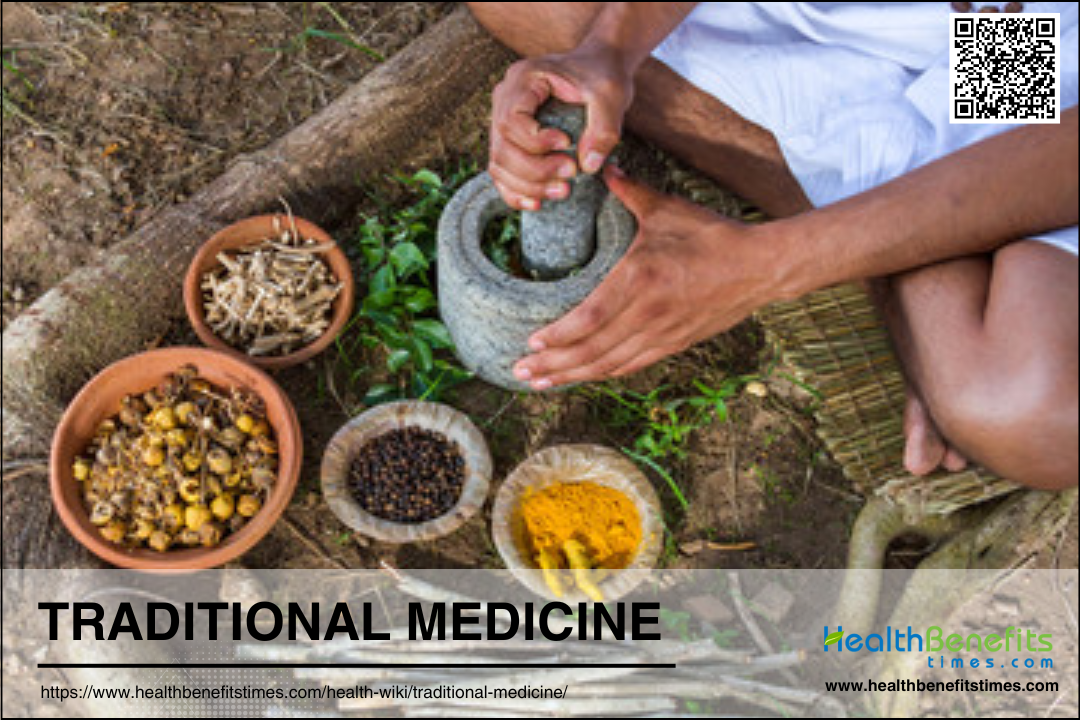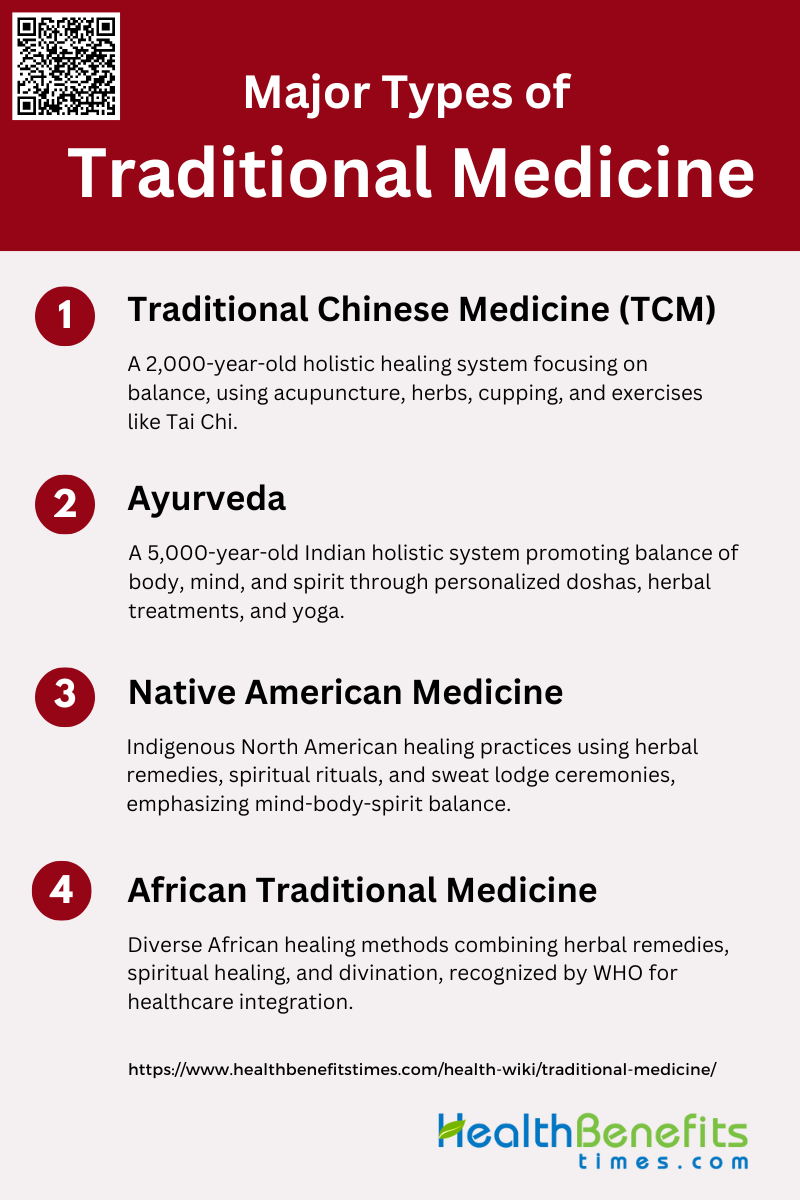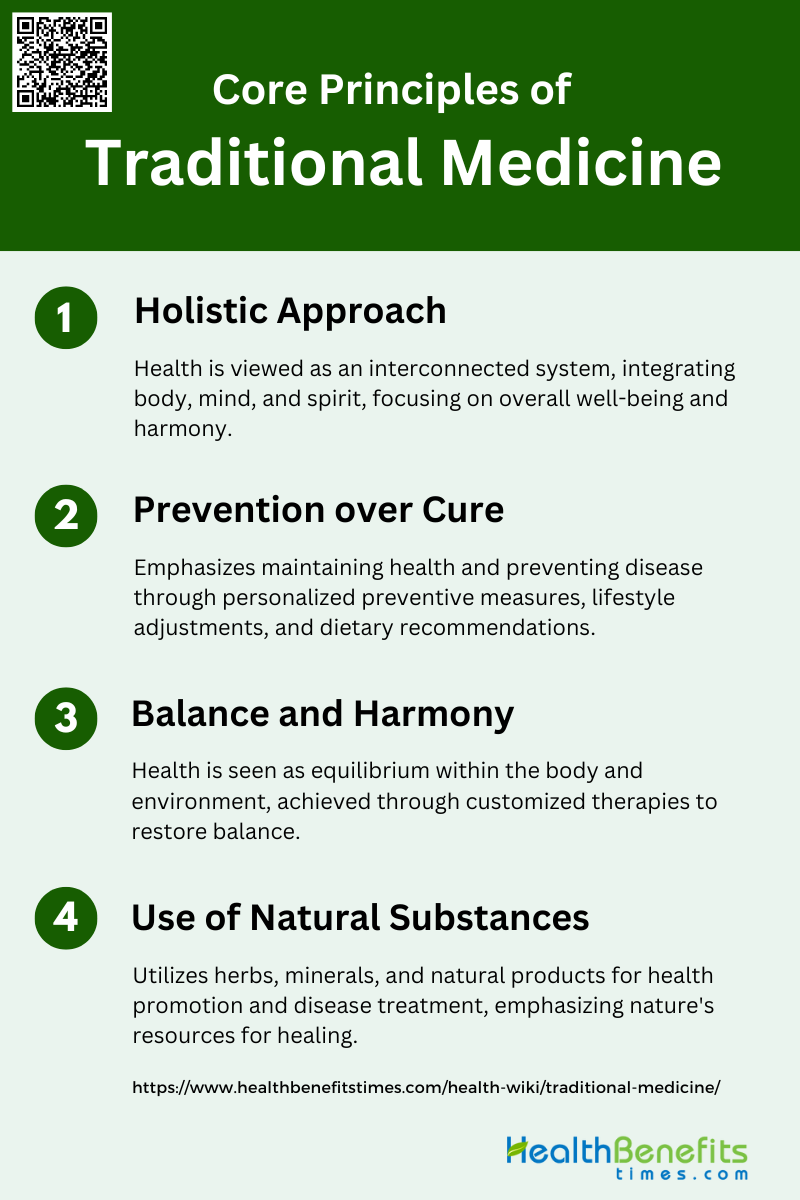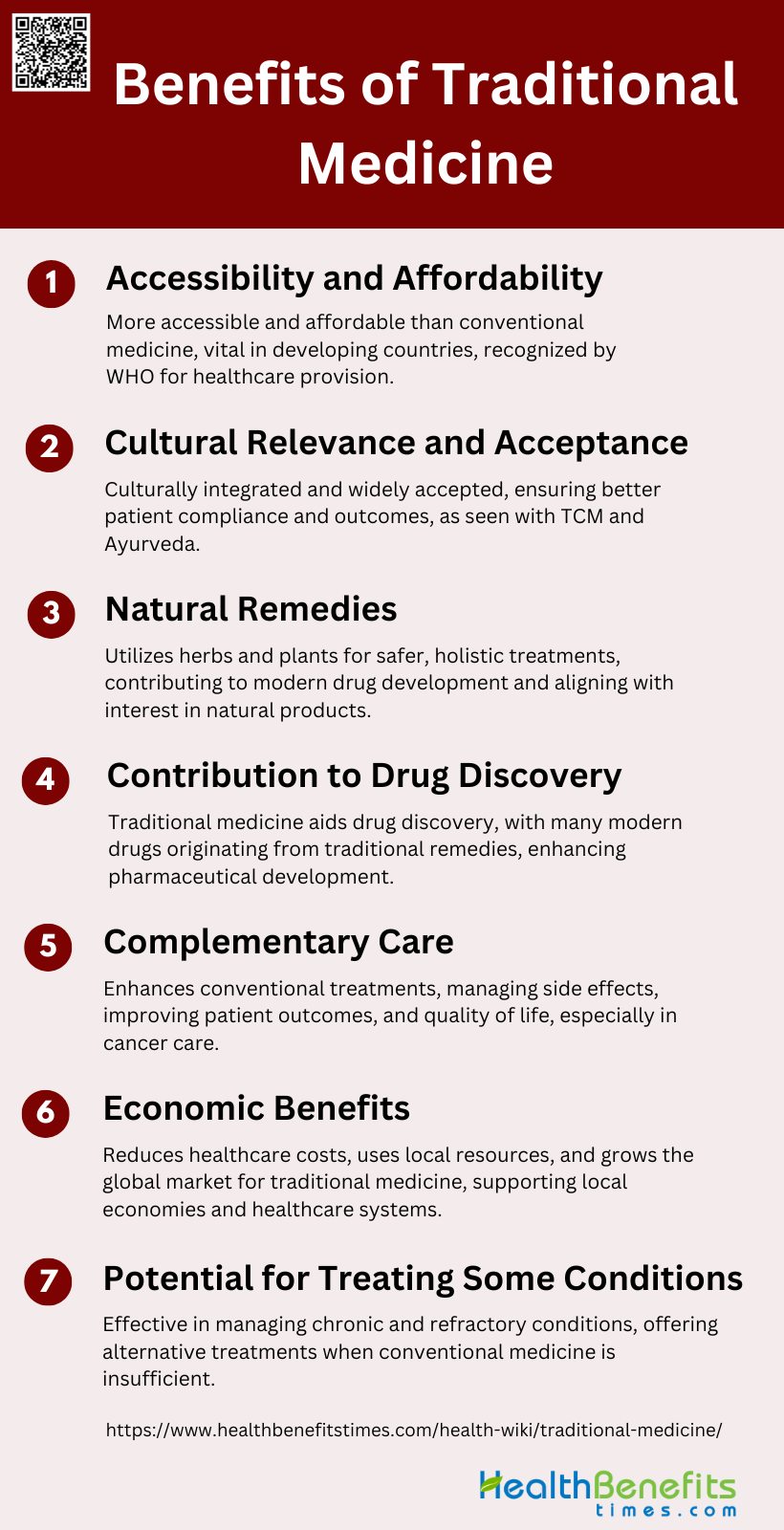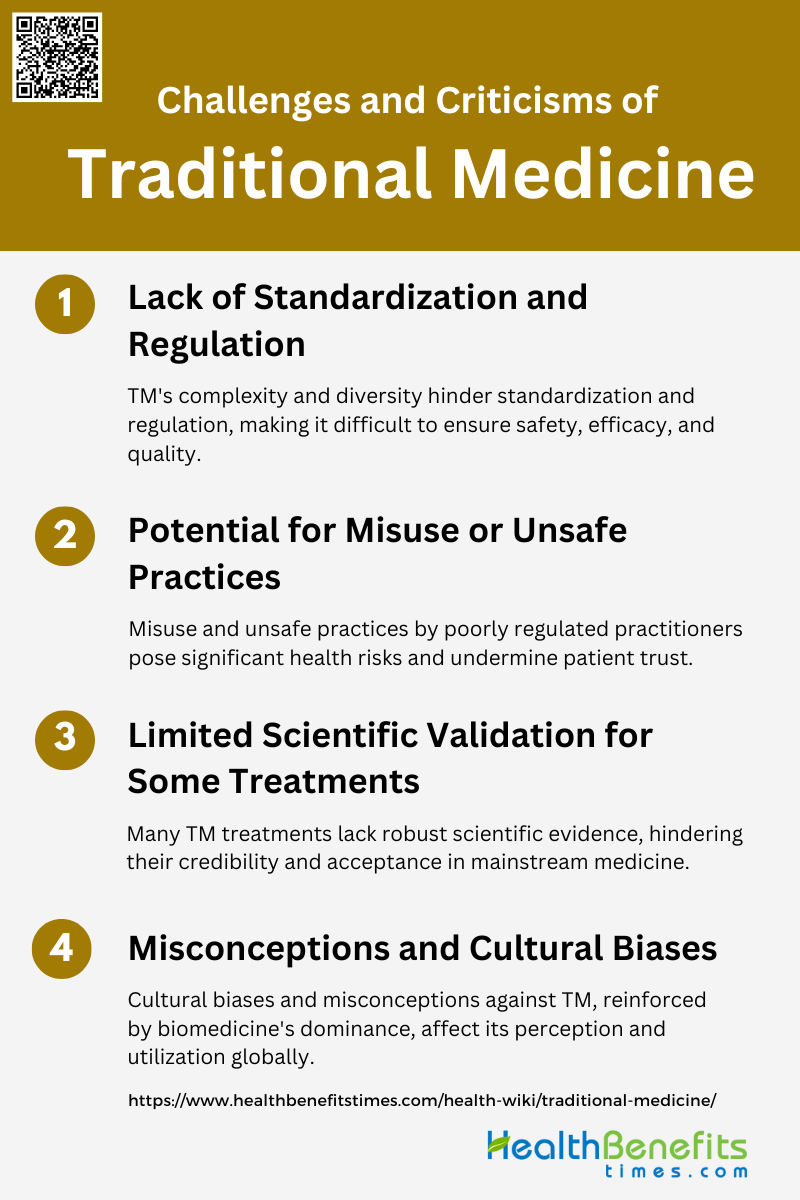Traditional medicine refers to the knowledge, skills, and practices based on the theories, beliefs, and experiences indigenous to different cultures, used in the maintenance of health and in the prevention, diagnosis, improvement, or treatment of physical and mental illnesses. It encompasses a wide array of practices, including herbal medicine, acupuncture, massage, and other therapies derived from plants, animals, and minerals. Traditional medicine is deeply rooted in cultural traditions and is often passed down through generations. It remains a primary source of healthcare for many people worldwide, particularly in regions where access to conventional medical services is limited. Despite its extensive use, traditional medicine varies significantly across cultures and is often integrated with modern medical practices to enhance healthcare outcomes
History of Traditional Medicine
The history of traditional medicine is deeply rooted in ancient civilizations, with the earliest records tracing back to societies such as the Egyptians, Greeks, and Chinese. These ancient cultures developed sophisticated medical practices, often intertwining medicine with religion and magic, as seen in the use of herbs and rituals by early practitioners. During the Middle Ages, the progress of medical knowledge experienced a significant stagnation, often referred to as the “Dark Ages,” where supernatural theories of disease dominated, and scientific advancements were minimal. However, the Renaissance marked a pivotal period of revival and transformation in medicine, characterized by anatomical dissections and the emergence of modern medical concepts, such as the circulation of blood described by William Harvey. In contemporary times, traditional medicine continues to play a vital role, with many modern drugs having origins in ancient herbal remedies. The integration of traditional knowledge with modern scientific approaches has opened new avenues for drug discovery and holistic health practices.
Major Types of Traditional Medicine
Traditional medicine encompasses a variety of practices and treatments that have been used for centuries across different cultures. These methods often rely on natural remedies, spiritual healing, and holistic approaches to health. Below are some of the major types of traditional medicine practiced around the world:
1. Traditional Chinese Medicine (TCM)
Traditional Chinese Medicine (TCM) is a comprehensive healing system with a history spanning over 2,000 years. It is based on the concept of balance and harmony within the body, emphasizing the interconnectedness of physical, mental, and spiritual well-being. TCM views health as a state of equilibrium between opposing forces of yin and yang, and aims to restore this balance through various therapeutic approaches. The practice has gained global recognition for its holistic approach to health and has been integrated into many modern healthcare systems. Below are list of Traditional Chinese Medicine types:
- Acupuncture: Insertion of thin needles into specific points on the body to stimulate healing and relieve pain.
- Moxibustion: Application of heat to acupuncture points using burning herbs.
- Cupping therapy: Creating suction on the skin using cups to improve blood flow and reduce pain.
- Tui Na massage: Manual therapy combining massage and acupressure techniques.
- Gua Sha (scraping therapy): Scraping the skin with a tool to improve circulation and reduce inflammation.
- Chinese herbal medicine: Use of plant-based remedies to treat various conditions.
- Dietary therapy: Tailoring diet based on individual constitution and health needs.
- Qigong: Gentle exercises combining movement, meditation, and breathing techniques.
- Tai Chi: Slow, graceful movements that improve balance, flexibility, and mental focus.
2. Ayurveda
Ayurveda, meaning “science of life” in Sanskrit, is an ancient holistic healing system originating in India over 5,000 years ago. It emphasizes the balance between body, mind, and spirit, and aims to prevent illness and promote overall well-being. Ayurveda is based on the belief that health and wellness depend on a delicate balance between the mind, body, and spirit. The practice is personalized, taking into account an individual’s unique physical and emotional makeup, known as their dosha. Below are some types of Ayurveda:
- Doshas: Three primary life forces (Vata, Pitta, and Kapha) that govern bodily functions.
- Herbal treatments: Use of plant-based remedies to address various health concerns.
- Yoga: Physical postures, breathing exercises, and meditation to promote physical and mental well-being.
3. Native American Medicine
Native American medicine is a diverse and complex system of healing practices that have been used by indigenous peoples of North America for thousands of years. These practices are deeply rooted in spiritual beliefs and a holistic approach to health, emphasizing the interconnectedness of mind, body, and spirit. Native American healing traditions often incorporate natural remedies, rituals, and ceremonies to restore balance and promote wellness. These practices vary among different tribes and regions, reflecting the rich cultural diversity of Native American communities. Below are Native American Medicine types:
- Herbal remedies: Use of plants and herbs for medicinal purposes, often gathered and prepared according to traditional knowledge.
- Spiritual healing: Rituals and ceremonies conducted by medicine men or women to address physical and spiritual ailments.
- Sweat lodge ceremonies: Purification rituals involving intense heat to cleanse the body and spirit.
4. African Traditional Medicine
African Traditional Medicine (ATM) encompasses a wide range of healing practices that have been used across the African continent for centuries. These practices are deeply ingrained in local cultures and often involve a combination of herbal remedies, spiritual healing, and divination. ATM plays a significant role in healthcare for many African communities, particularly in rural areas where access to modern medical facilities may be limited. The World Health Organization recognizes the importance of ATM and has been working to integrate it into national health systems while addressing issues of safety, efficacy, and quality. Below are types of African Traditional Medicine:
- Herbal treatments: Use of indigenous plants and herbs to treat various ailments and promote health.
- Divination: Practices used to diagnose illnesses and determine appropriate treatments, often involving spiritual elements.
- Spiritual practices: Rituals and ceremonies aimed at restoring balance and harmony between the individual and their environment.
Core Principles of Traditional Medicine
Traditional medicine is grounded in a set of core principles that guide its practices and treatments. These principles emphasize the balance of mind, body, and spirit, and often incorporate natural remedies and holistic approaches. Below are the core principles that underpin traditional medicine:
1. Holistic Approach
Traditional medicine systems, such as Ayurveda and Traditional Chinese Medicine (TCM), emphasize a holistic approach to health, viewing the body, mind, and spirit as interconnected entities. Ayurveda, for instance, considers the human being as a microcosm of the universe, where health is maintained by balancing the dynamic forces (Dosha) within the body. Similarly, TCM employs a holistic theory that focuses on balancing the body’s systems using natural products, particularly herbal formulas, to treat complex diseases. This holistic perspective is also evident in the synergistic approach, which aims to restore balance and harmony within the body by considering various factors such as biological, physiological, and psychological elements. By integrating these diverse aspects, traditional medicine seeks to promote overall well-being rather than merely addressing isolated symptoms.
2. Prevention over Cure
Prevention is a cornerstone of traditional medicine, with a strong emphasis on maintaining health to avoid disease. TCM, for example, has guided health maintenance and disease prevention for thousands of years by examining an individual’s unique body constitution to tailor personalized preventive measures. Ayurveda also underscores the importance of lifestyle adjustments, dietary recommendations, and seasonal routines to cultivate resilience and balance, thereby preventing mental and physical health issues. The preventive approach in traditional medicine is further supported by modern techniques and research, which validate the effectiveness of these ancient practices in promoting long-term health and preventing disease. This focus on prevention over cure aligns with the broader goal of achieving sustained well-being through proactive health management.
3. Balance and Harmony
The principle of balance and harmony is central to traditional medicine, where health is seen as a state of equilibrium within the body and between the individual and their environment. In Ayurveda, maintaining the equilibrium of Doshas is crucial for health, and therapies are customized to the individual’s constitution to restore balance. Traditional Chinese Medicine also emphasizes the importance of balancing disordered body systems using natural substances and herbal formulas, aiming to harmonize the body’s functions. The synergistic approach in traditional medicine further highlights the need for coordinated interaction among the body’s systems, organs, and cells to achieve internal harmony. By focusing on restoring and maintaining balance, traditional medicine seeks to create a harmonious state that supports overall health and well-being.
4. Use of Natural Substances
Traditional medicine extensively utilizes natural substances, such as herbs, minerals, and other natural products, to promote health and treat diseases. Ayurveda, for instance, relies heavily on plant-derived medicines, which have been tested for their biological and clinical potential using modern ethnovalidation methods. TCM also specializes in using numerous natural products, particularly Chinese herbal formulas, to treat various complex diseases. The use of natural substances is not limited to medicinal herbs; it also includes everyday items like water, garlic, and herbal decoctions, which can effectively balance bodily processes and serve as medicine. This reliance on natural substances underscores the traditional medicine principle that nature provides a wealth of resources for maintaining health and treating illness.
Benefits of Traditional Medicine
Traditional medicine offers numerous benefits that have been recognized and utilized for centuries. These practices often focus on holistic healing, natural remedies, and preventive care. Below are some of the key benefits of traditional medicine:
1. Accessibility and Affordability
Traditional medicine is often more accessible and affordable compared to conventional medicine, especially in developing countries. For instance, in regions like Africa, Asia, and Latin America, traditional medicine is deeply rooted in local culture and is widely used due to its accessibility and lower cost. The World Health Organization (WHO) has recognized the significant role of traditional medicine in providing healthcare to large populations who may not have access to modern medical facilities. This accessibility makes traditional medicine a vital component of healthcare systems in many parts of the world.
2. Cultural Relevance and Acceptance
Traditional medicine is culturally relevant and widely accepted in many societies. It is often integrated into the daily lives and practices of people, making it a trusted source of healthcare. For example, traditional Chinese medicine (TCM) and Ayurveda are not only medical systems but also part of the cultural heritage in China and India, respectively. The cultural congruence of these practices ensures that they are more readily accepted by the local population, which can lead to better patient compliance and outcomes.
3. Natural Remedies
Natural remedies form the cornerstone of traditional medicine, utilizing herbs, plants, and other natural substances. These remedies have been used for centuries and are often considered safer and more holistic compared to synthetic drugs. For instance, many modern drugs have been derived from natural products used in traditional medicine, such as the anticancer drug paclitaxel, which was originally derived from the bark of the yew tree. The use of natural remedies also aligns with the growing global interest in organic and natural products.
4. Contribution to Drug Discovery
Traditional medicine has significantly contributed to drug discovery and the development of new therapeutic agents. Many modern pharmaceuticals have origins in traditional remedies. For example, the chemotherapy drug paclitaxel was derived from the yew tree, a plant used in traditional medicine. The rich biodiversity and extensive knowledge base of traditional medicine provide a valuable resource for identifying new bioactive compounds that can be developed into modern drugs.
5. Complementary Care
Traditional medicine often serves as a complementary approach to conventional medical treatments. It can enhance the effectiveness of modern therapies and help manage side effects. For instance, traditional Chinese medicine is known for its role in cancer care, where it is used to prevent tumorigenesis, reduce toxicity, and enhance the efficacy of conventional treatments. This complementary role can improve patient outcomes and quality of life.
6. Economic Benefits
The economic benefits of traditional medicine are substantial, particularly in developing countries where it can reduce healthcare costs. Traditional medicine often relies on locally available resources, which can be more cost-effective than imported pharmaceuticals. Additionally, the global market for traditional medicine and natural products is growing, providing economic opportunities for local communities and contributing to the global economy. The integration of traditional medicine into national healthcare systems can also reduce the financial burden on these systems.
7. Potential for Treating Some Conditions
Traditional medicine has shown potential in treating conditions that are not well-managed by conventional medicine. For example, traditional Chinese medicine has been effective in managing chronic diseases, improving quality of life, and treating conditions like cancer. Similarly, Ayurveda has been used to manage chronic and refractory conditions, providing an alternative when conventional treatments are insufficient. The unique approaches and therapies in traditional medicine offer promising avenues for treating a variety of health issues.
Challenges and Criticisms of Traditional Medicine
While traditional medicine has been practiced for centuries, it faces several challenges and criticisms in the modern world. These issues often stem from concerns about safety, efficacy, and standardization. Below are some of the main challenges and criticisms of traditional medicine:
1. Lack of Standardization and Regulation
Traditional medicine (TM) faces significant challenges due to the lack of standardization and regulation. The World Health Organization (WHO) has called for increased statutory regulation of traditional and complementary medicine practitioners and practices, but the absence of policy guidelines remains a significant barrier to implementation. The diversity and complexity of traditional medical knowledge and practices make it difficult to develop and enforce standardized regulations. Additionally, the unique features of traditional Chinese medicine (TCM), such as individualization and holism, complicate the effective execution of randomized clinical trials (RCTs), further hindering standardization efforts. Without standardized regulations, ensuring the safety, efficacy, and quality of traditional medicine remains a major challenge.
2. Potential for Misuse or Unsafe Practices
The potential for misuse or unsafe practices in traditional medicine is a critical concern. Critics argue that patients may be misled by incompetent and poorly regulated practitioners, leading to health risks and even fatalities. For instance, adverse drug reactions from herbal medicines and injuries from practices like acupuncture and chiropractic manipulation are well-documented risks. Moreover, the lack of informed consent, confidentiality, and paternalism in some traditional medicine practices, particularly in African contexts, exacerbates the potential for harm. Until effective regulations and safety protocols are established, the risk of misuse and unsafe practices in traditional medicine will persist.
3. Limited Scientific Validation for Some Treatments
Many traditional medicine treatments lack robust scientific validation, which undermines their credibility and acceptance in the broader medical community. Although there have been significant efforts to validate the quality, effectiveness, and safety of TCM interventions, the results are often inconclusive due to the limited quality and quantity of trials. The efficacy of traditional medicine is fluid and context-dependent, making it difficult to achieve a consensus on its effectiveness. Additionally, the complex mixture of chemicals in herbal formulations requires rigorous scientific approaches for validation, which are often lacking. Without substantial scientific evidence, the acceptance and integration of traditional medicine into mainstream healthcare remain challenging.
4. Misconceptions and Cultural Biases
Misconceptions and cultural biases significantly impact the perception and utilization of traditional medicine. The historical dominance of biomedicine, reinforced by the European colonial encounter, has led to a disproportionate political and cultural bias against traditional medicine. This bias often results in the rejection or undervaluation of traditional practices, despite their widespread use, particularly in the global South. Additionally, the internationalization of TCM faces challenges such as unclear therapeutic mechanisms and registration barriers, which are often rooted in cultural biases. Addressing these misconceptions and biases is crucial for the equitable integration and recognition of traditional medicine in global healthcare systems.
Integration with Modern Medicine
Complementary and Alternative Medicine (CAM)
Complementary and alternative medicine (CAM) encompasses a wide range of practices and therapies that are not traditionally part of conventional medical training. These include acupuncture, chiropractic, herbal medicine, and homeopathy, among others. CAM therapies are often used alongside conventional treatments to enhance patient care, focusing on holistic and patient-centered approaches. The integration of CAM into mainstream healthcare is gaining traction globally, driven by patient demand and the potential for improved health outcomes. However, significant barriers such as economic, organizational, and scientific differences still exist, necessitating more robust evidence and better understanding among healthcare professionals.
Examples of Successful Integration (e.g., Integrative Oncology)
Integrative oncology is a prime example of successful CAM integration, where conventional cancer treatments are combined with complementary therapies to improve patient outcomes and quality of life. Studies have shown that open dialogues about CAM in oncology care, led by healthcare professionals, can significantly enhance patient satisfaction and well-being. In Washington State, health insurance coverage for CAM therapies has been mandated, leading to the development of integrated delivery systems. Additionally, educational programs designed to train healthcare professionals in CAM have been implemented, further supporting the integration of these therapies into conventional medical practice. These initiatives highlight the potential benefits of a multidisciplinary and patient-oriented approach to healthcare.
The Future of Traditional Medicine in Modern Healthcare
The future of traditional medicine in modern healthcare looks promising, with increasing efforts to integrate CAM into mainstream medical practice. The development of patient-centered models that prioritize the needs and preferences of patients over the interests of therapists or industries is crucial for achieving true integration. Research plays a vital role in this process, as evidence-based practices are essential for the acceptance and legitimacy of CAM therapies. Training healthcare professionals in both conventional and CAM practices can foster a more holistic and collaborative approach to patient care. As the healthcare landscape continues to evolve, the integration of traditional medicine into modern healthcare systems will likely become more widespread, benefiting patients through more comprehensive and personalized care.


